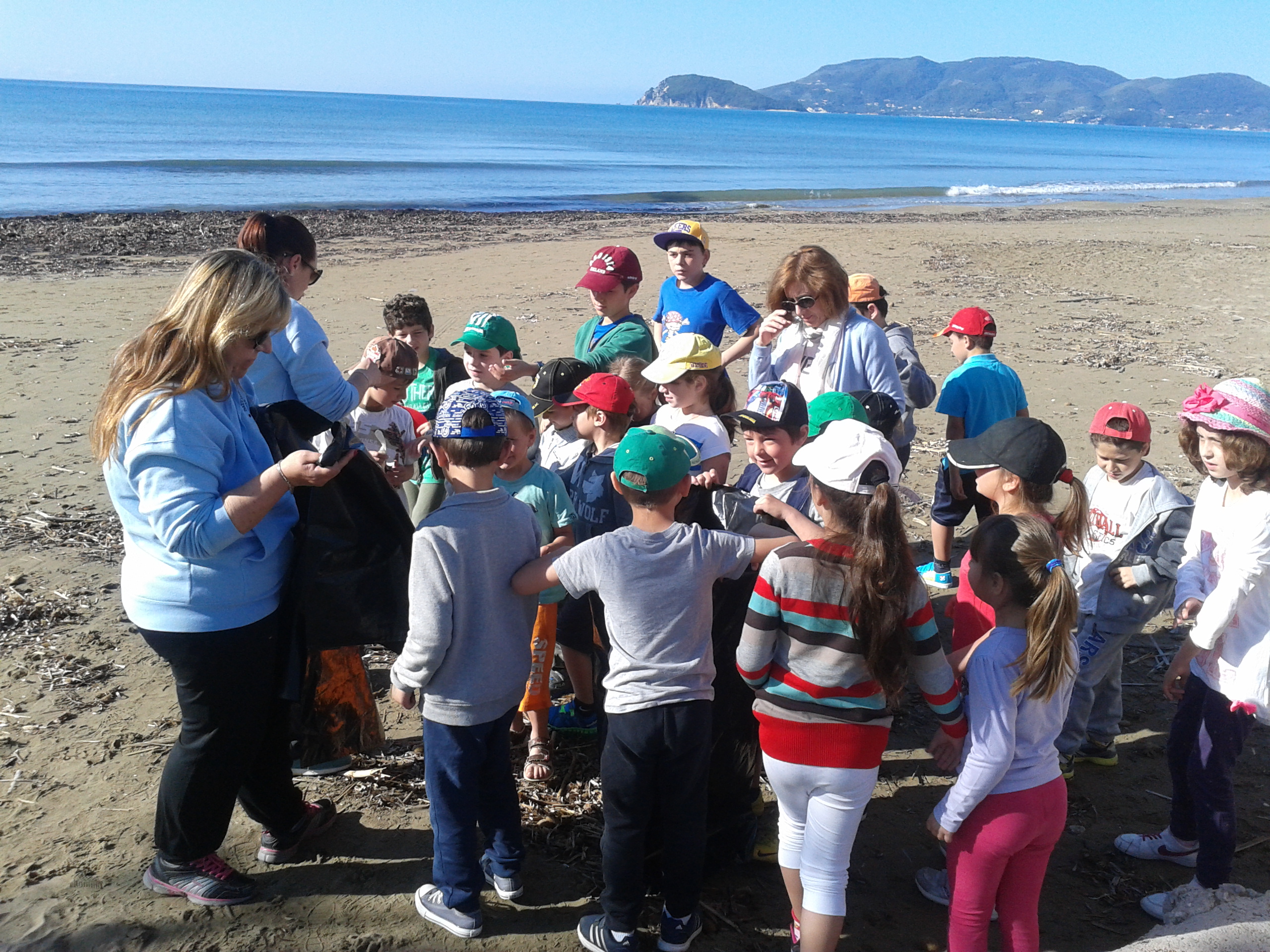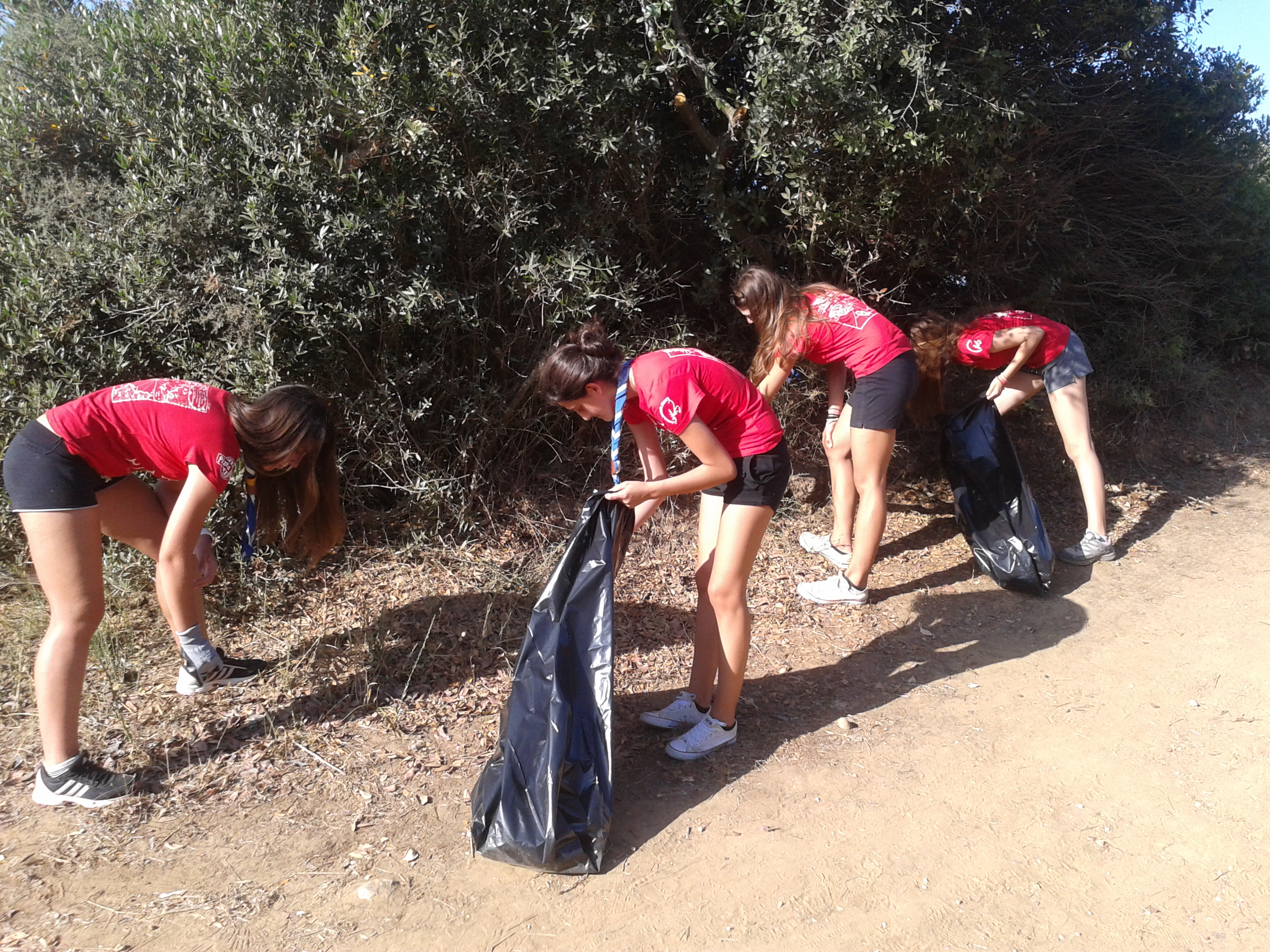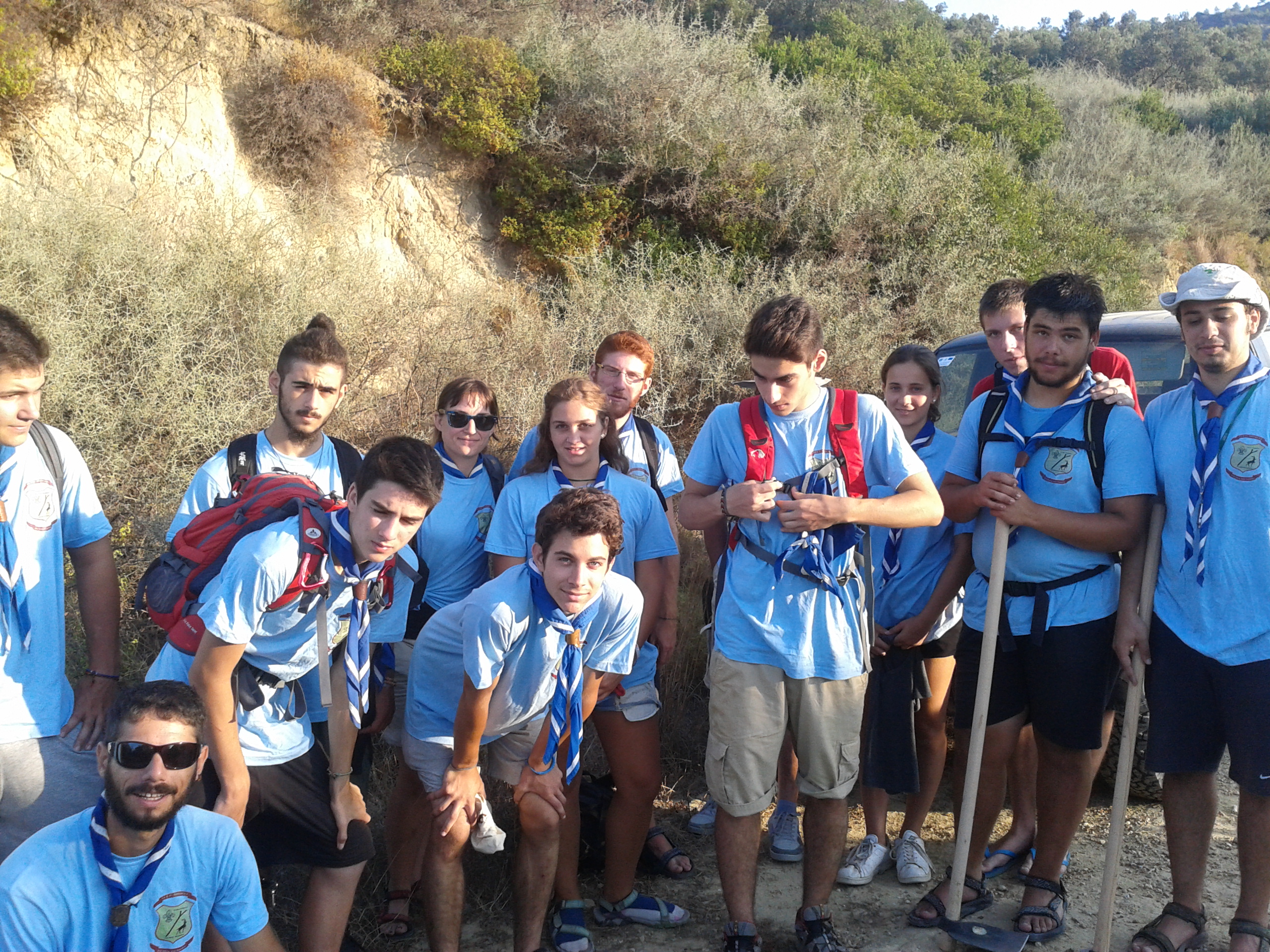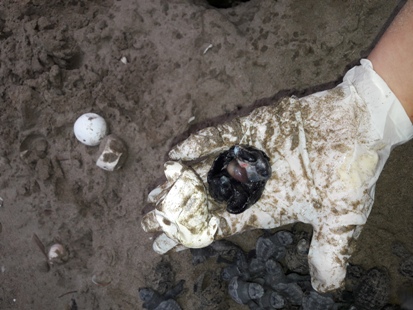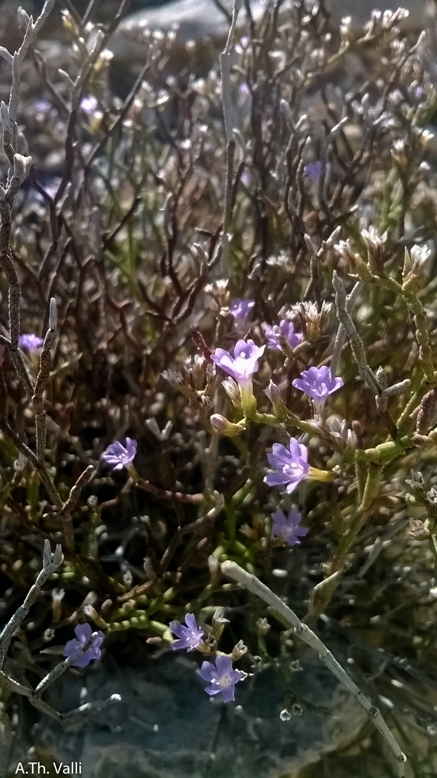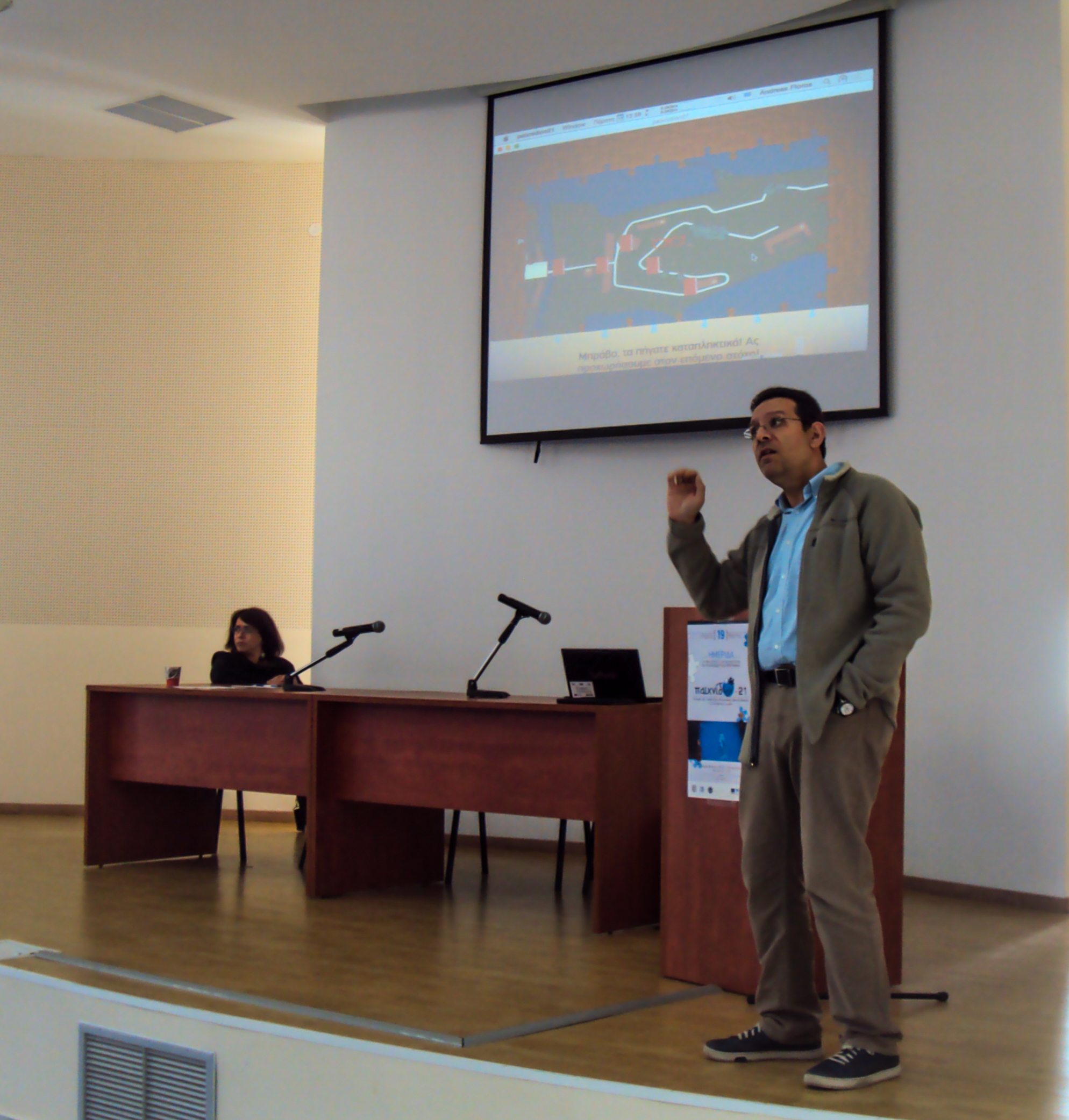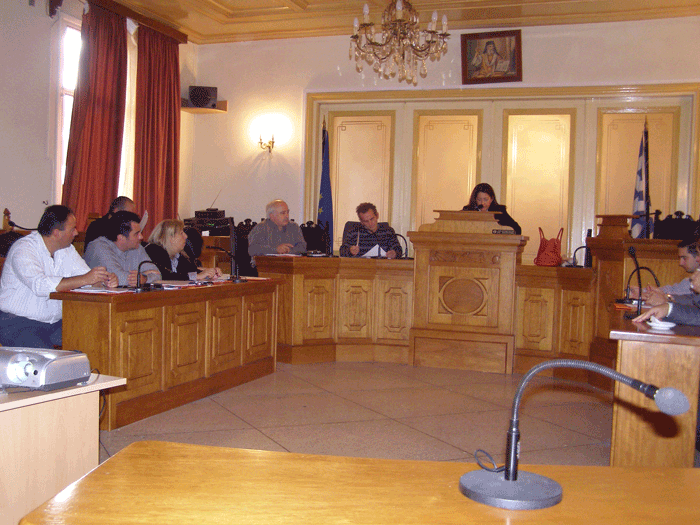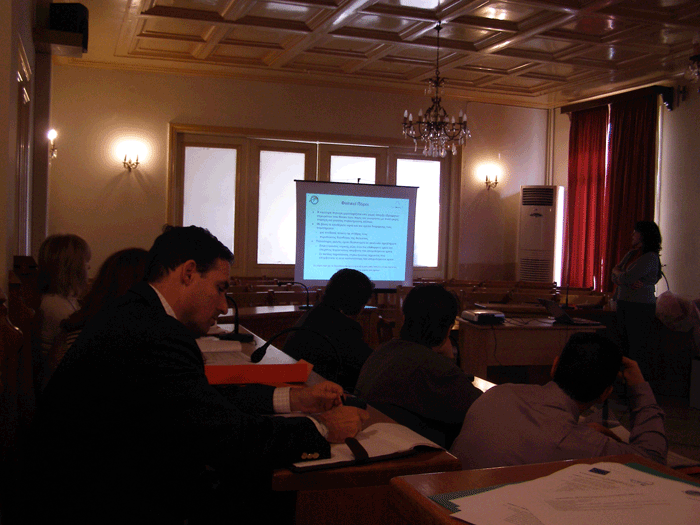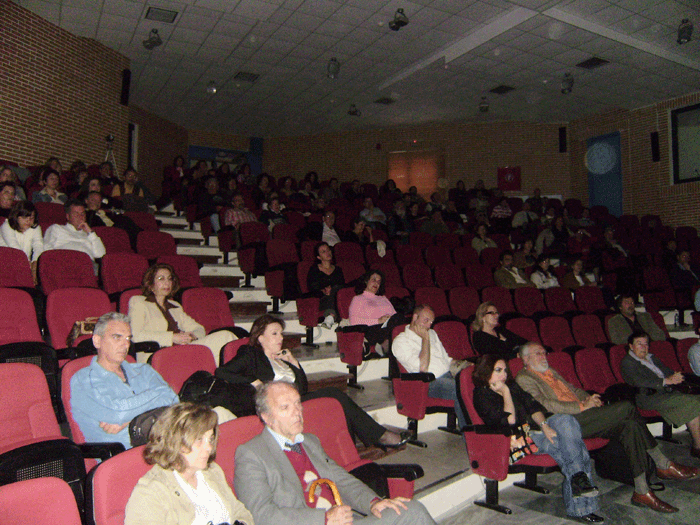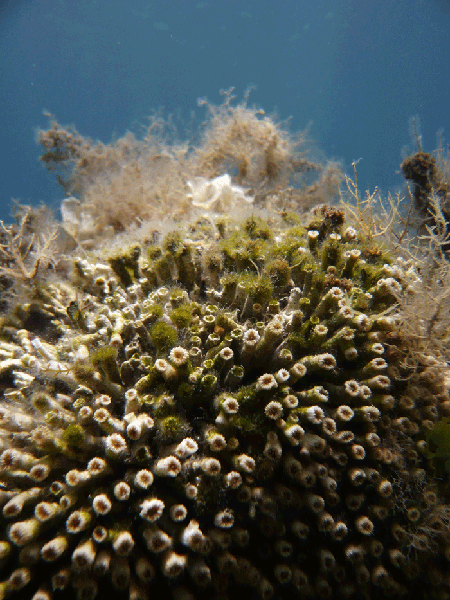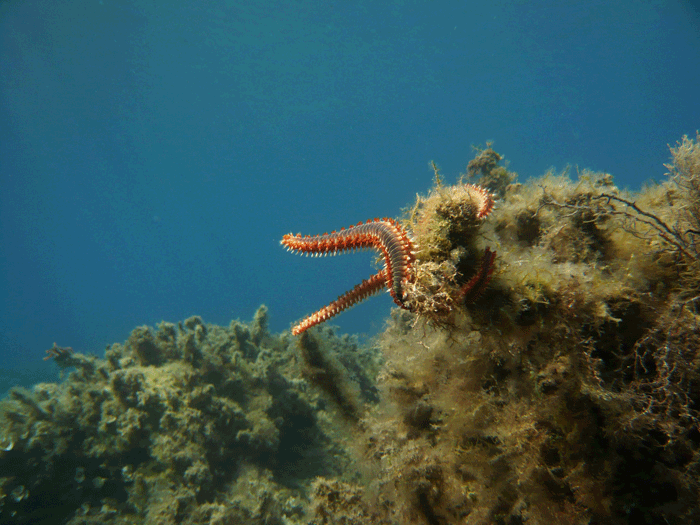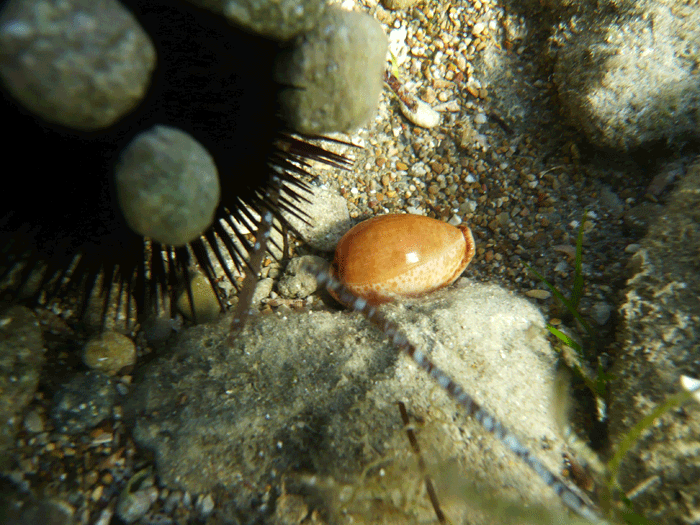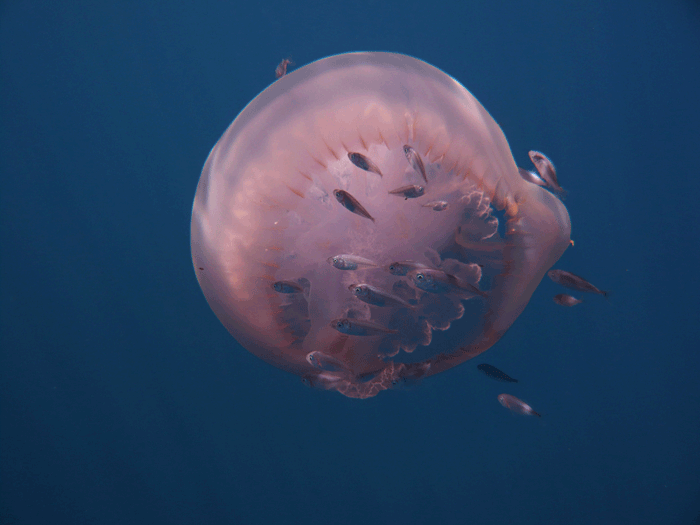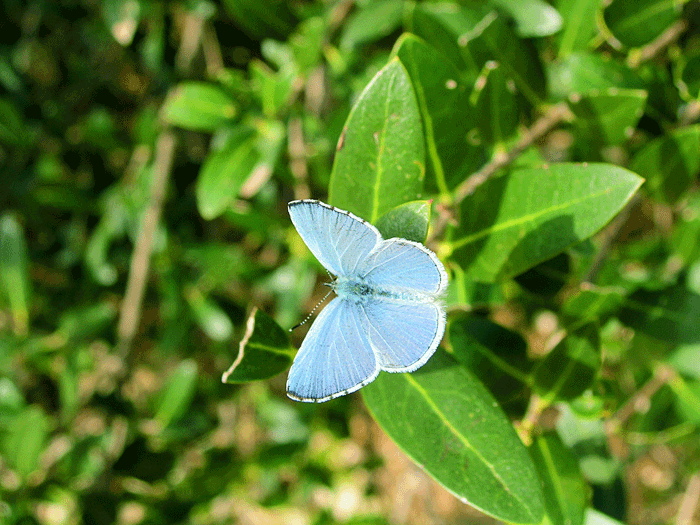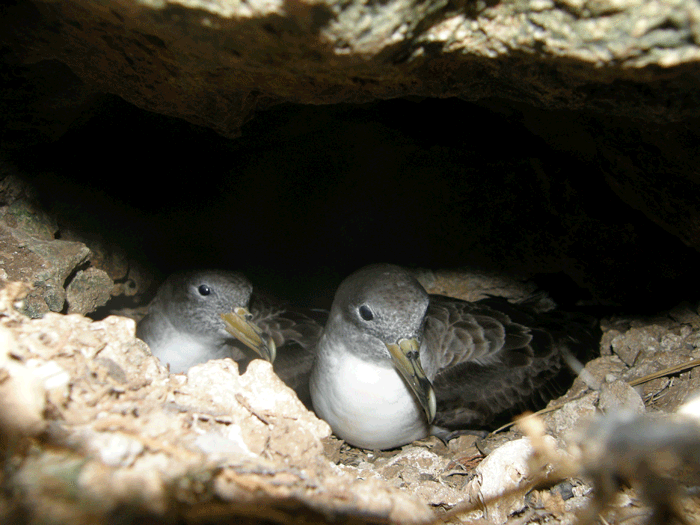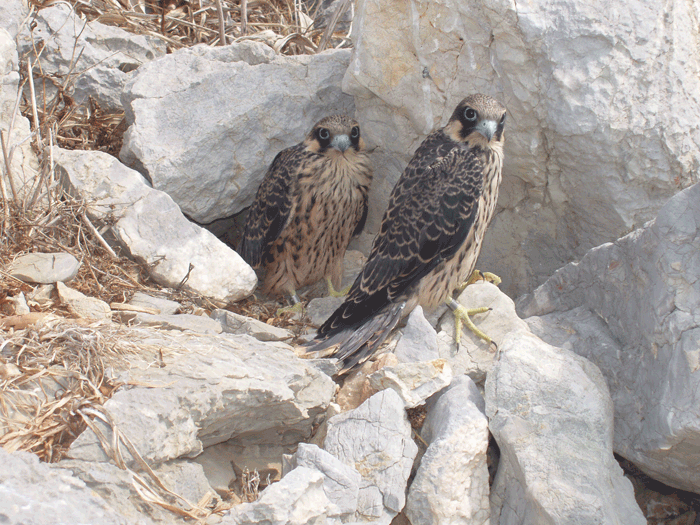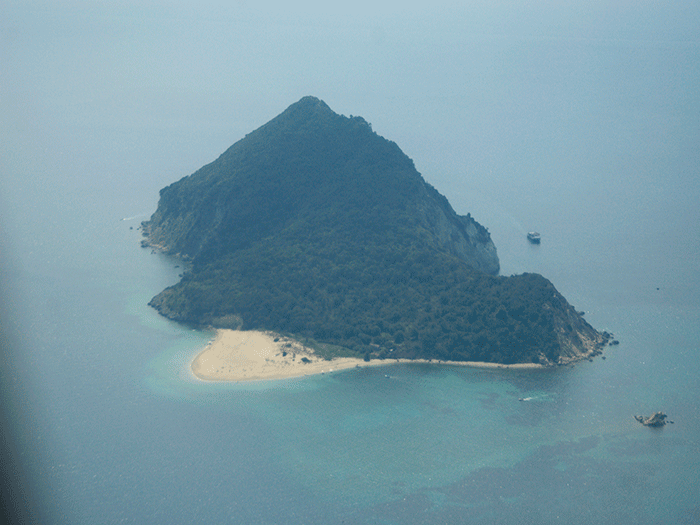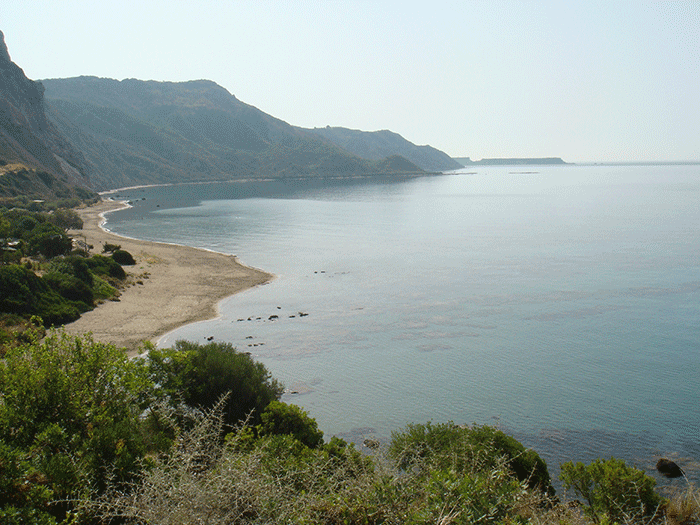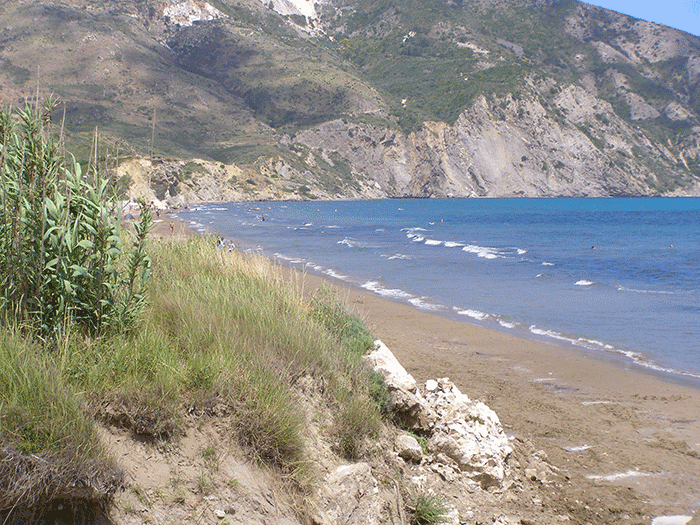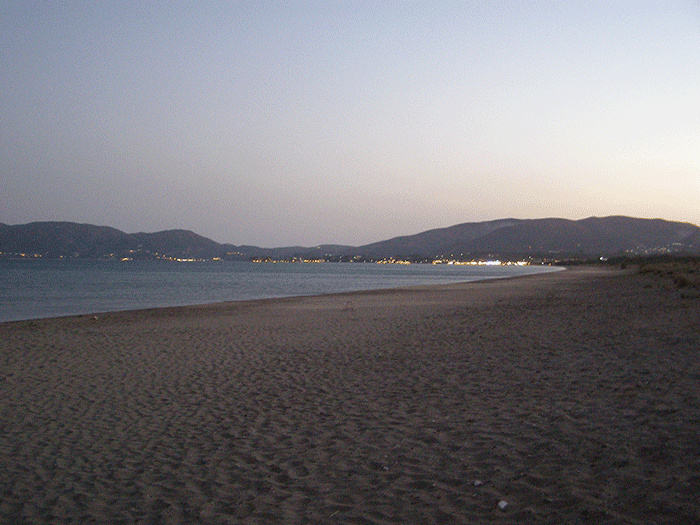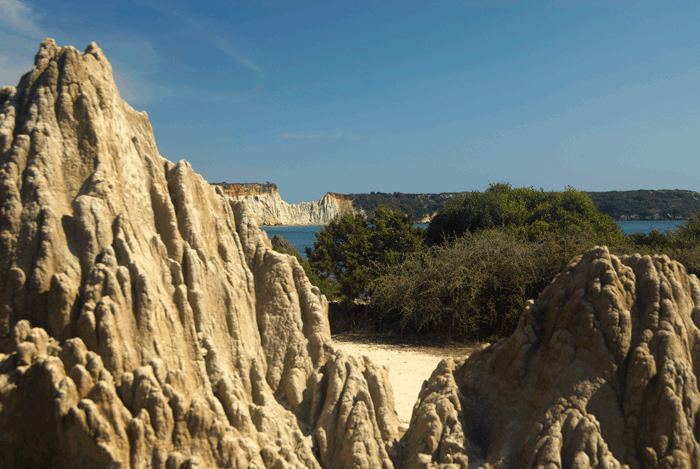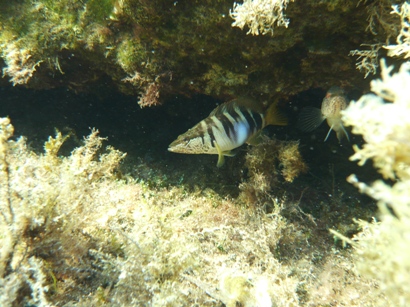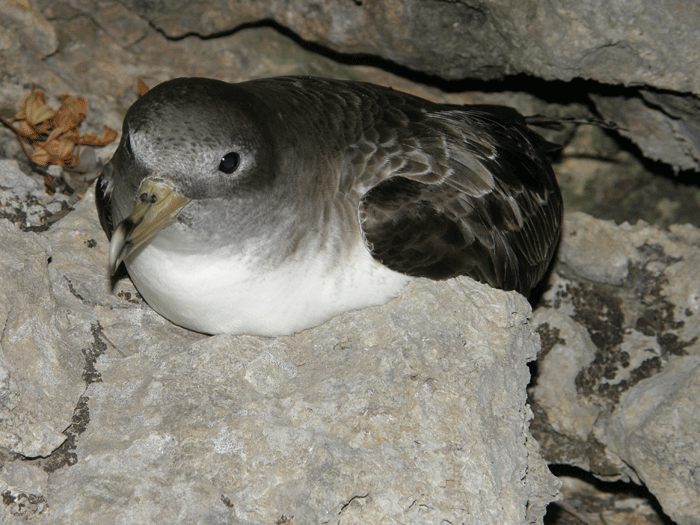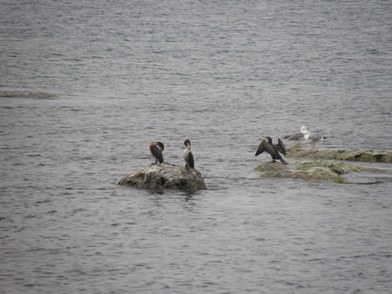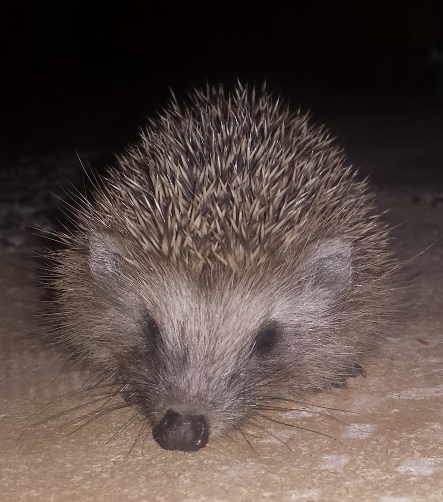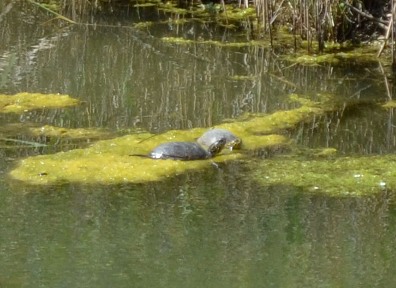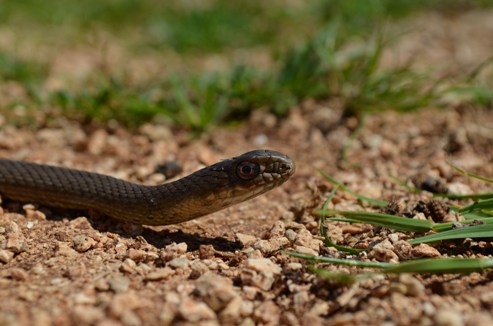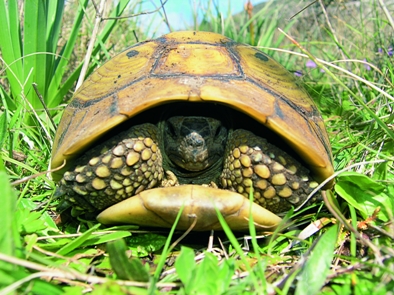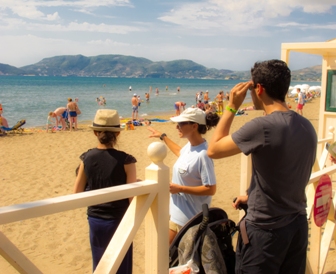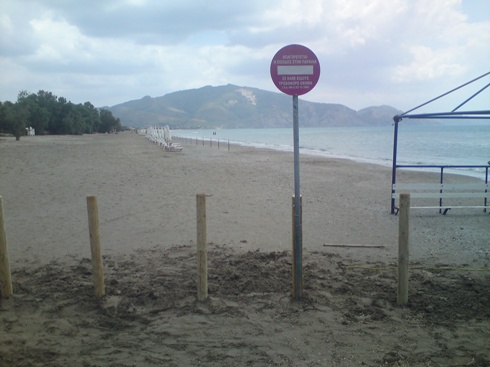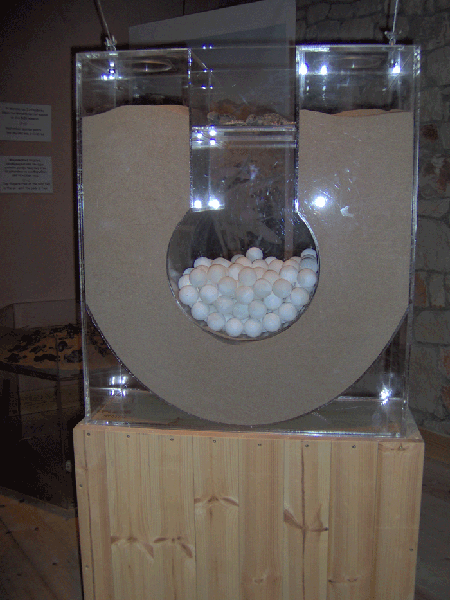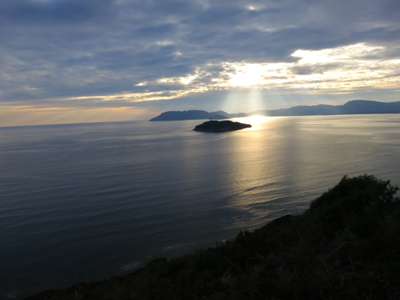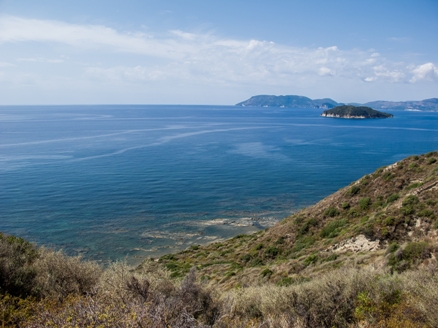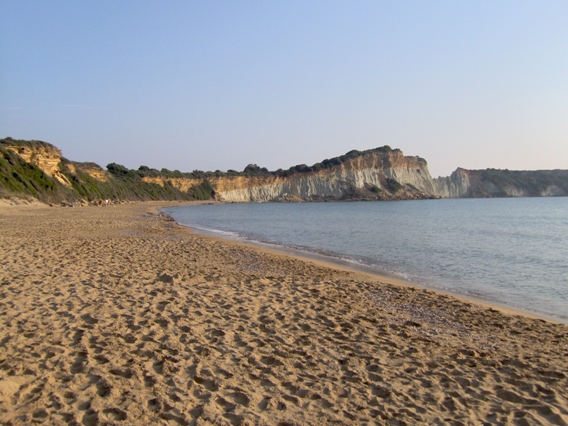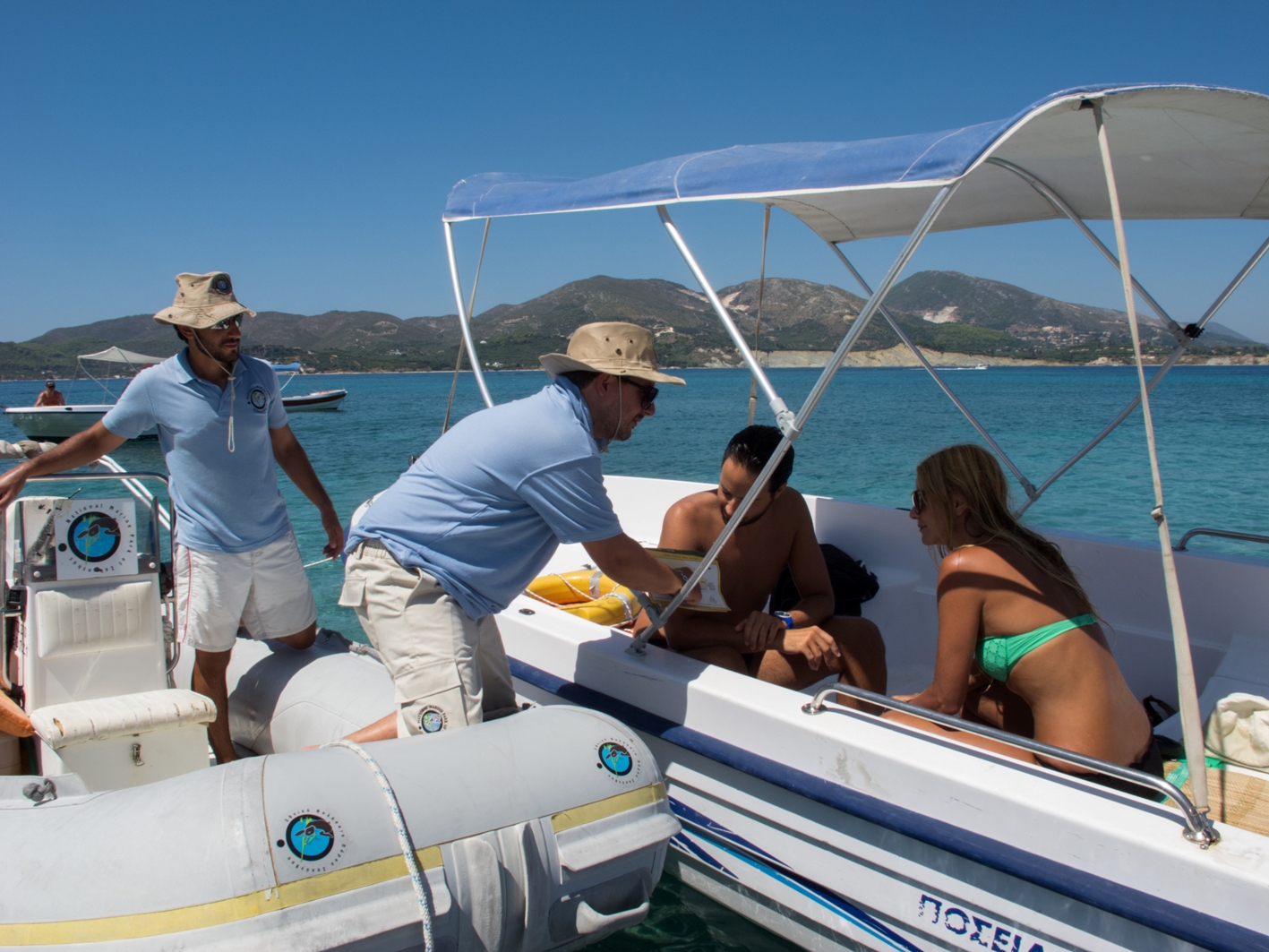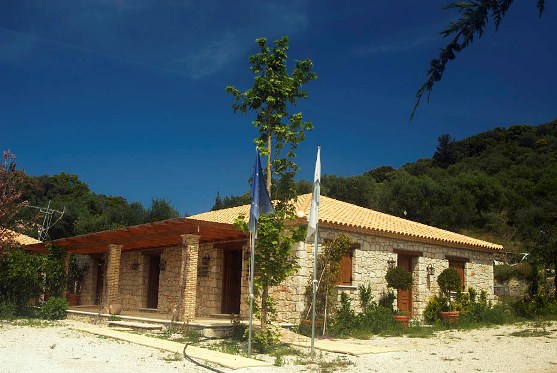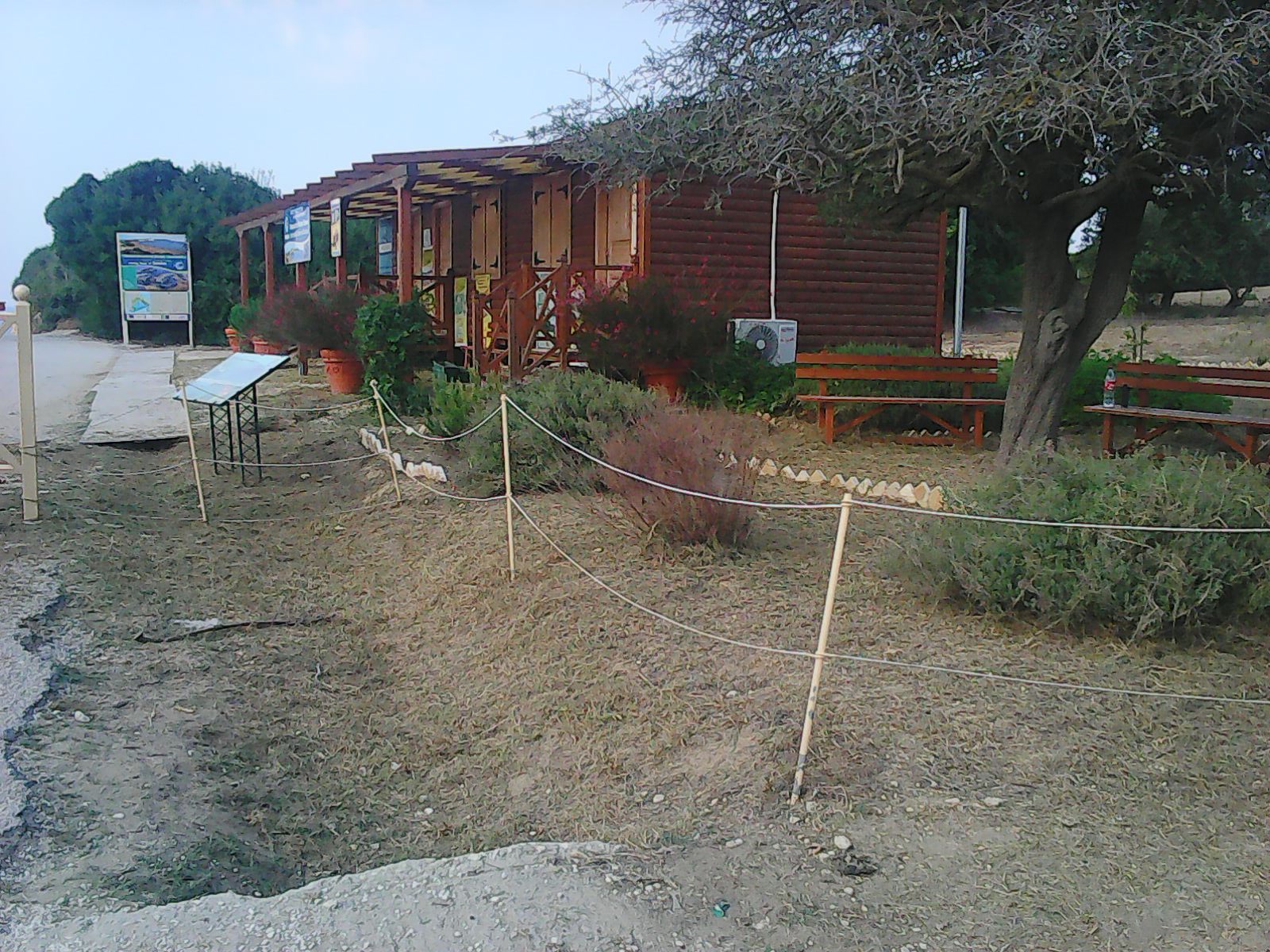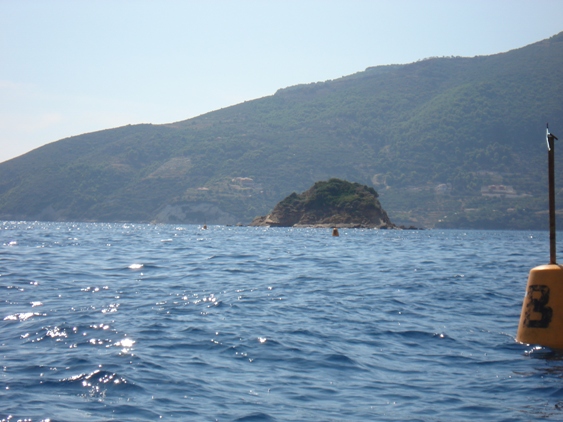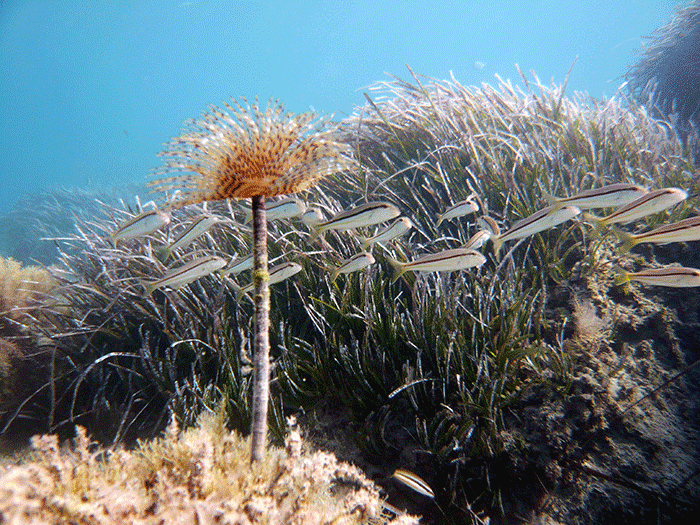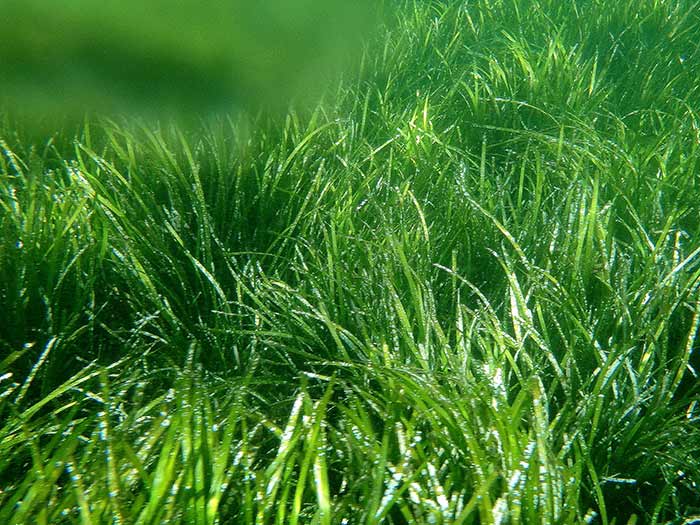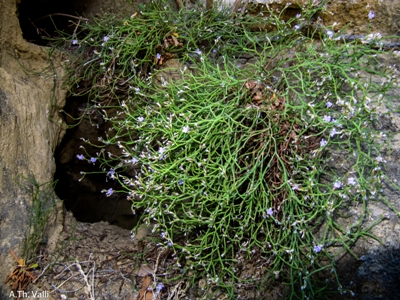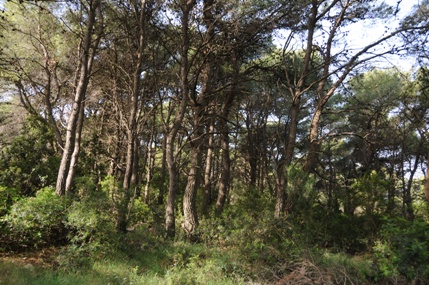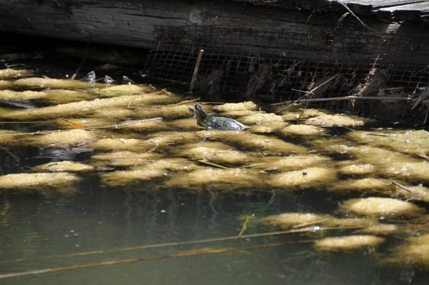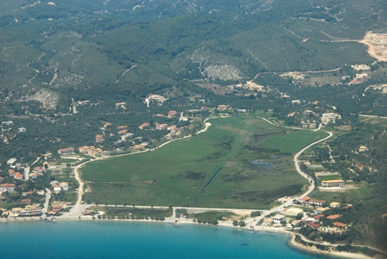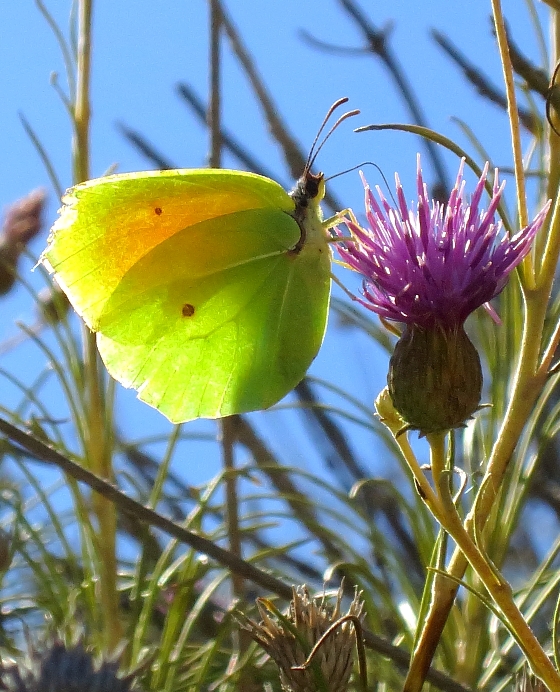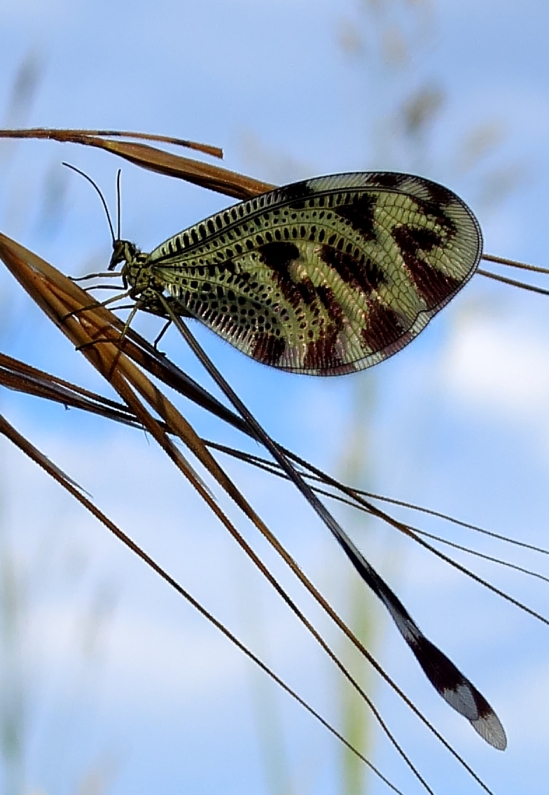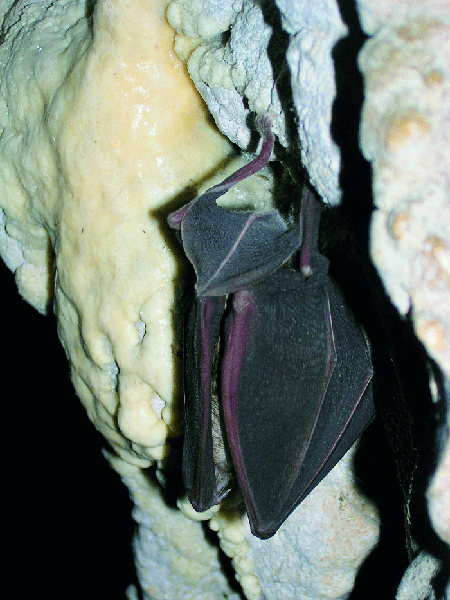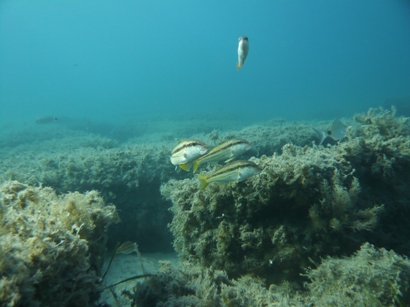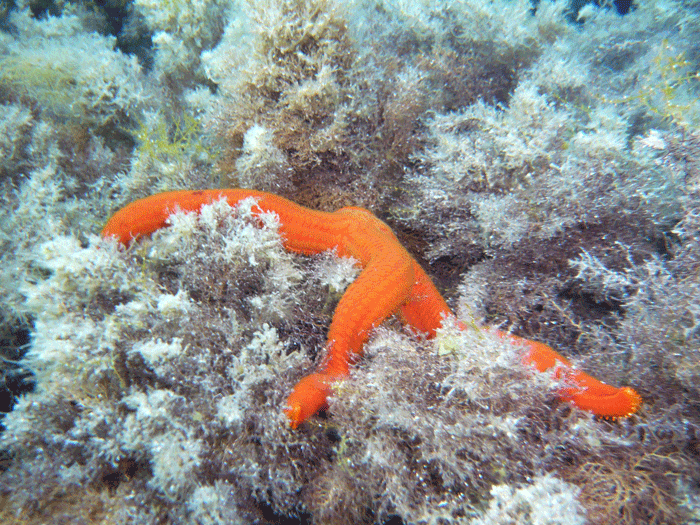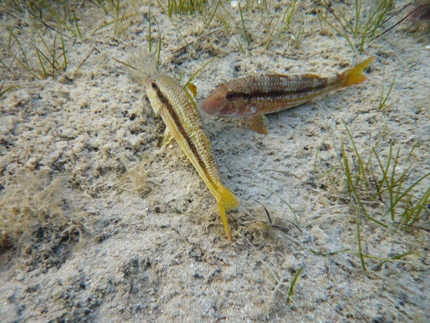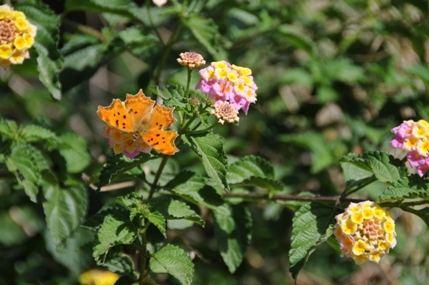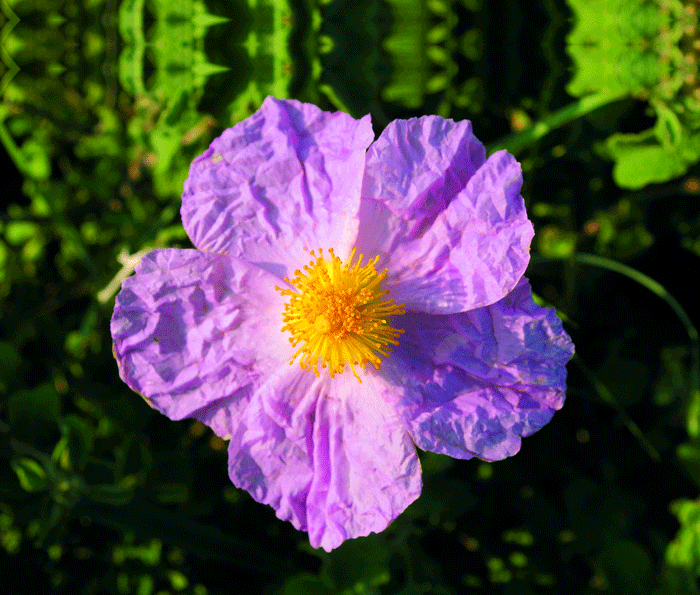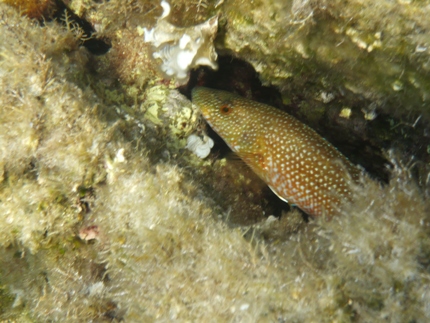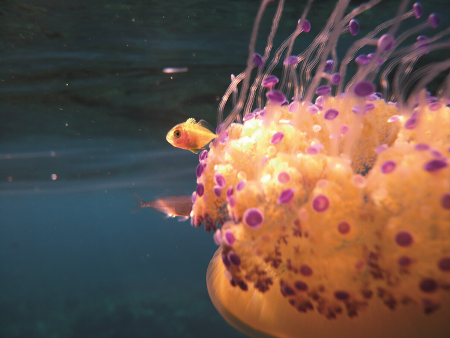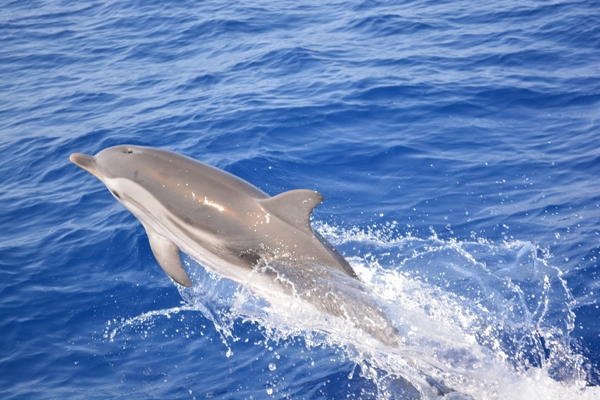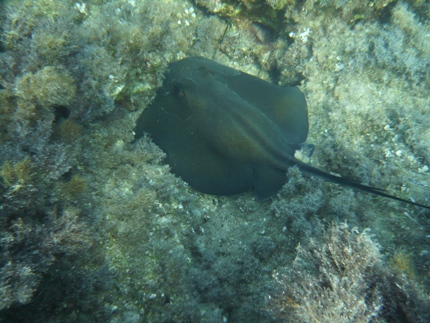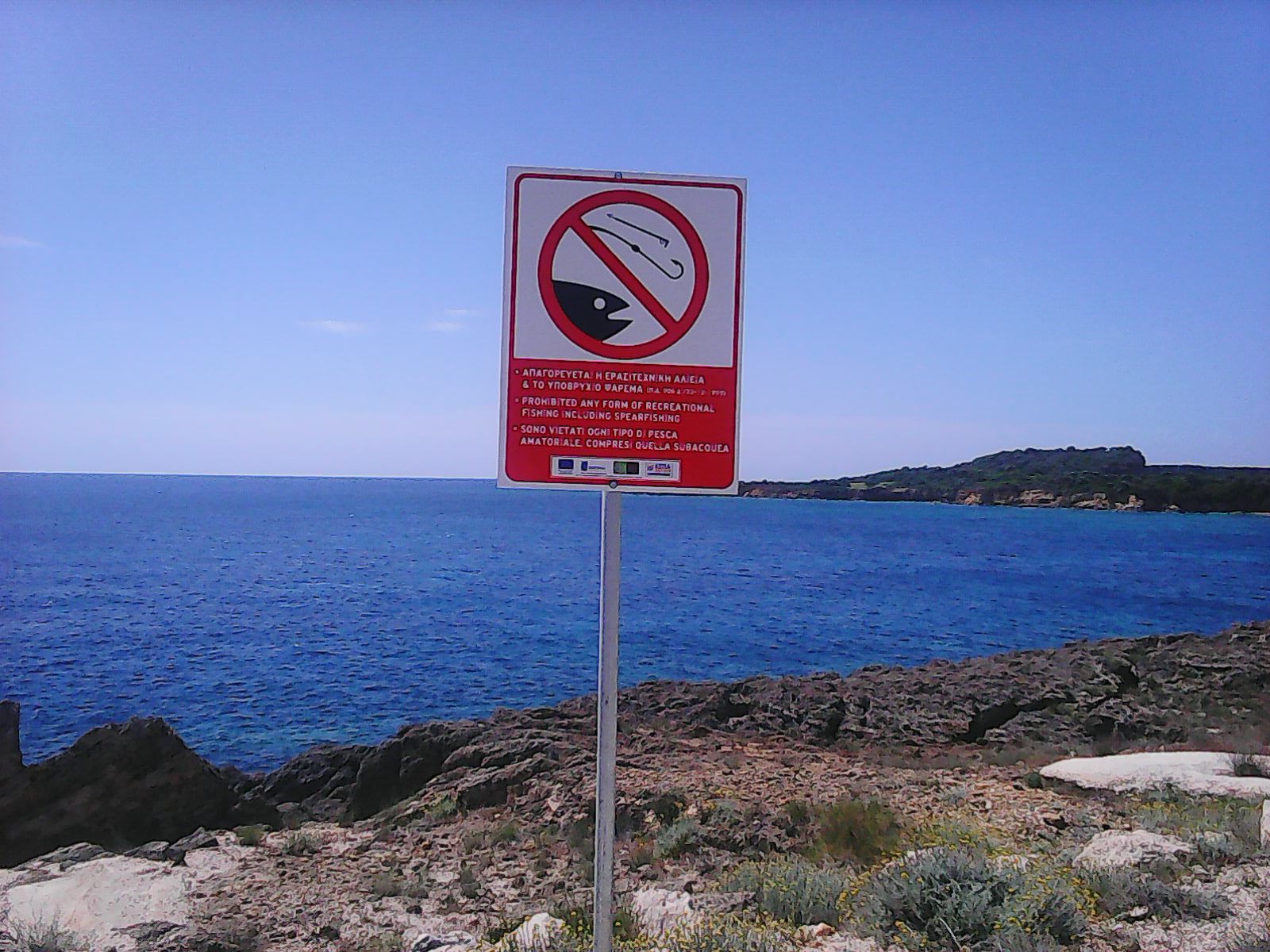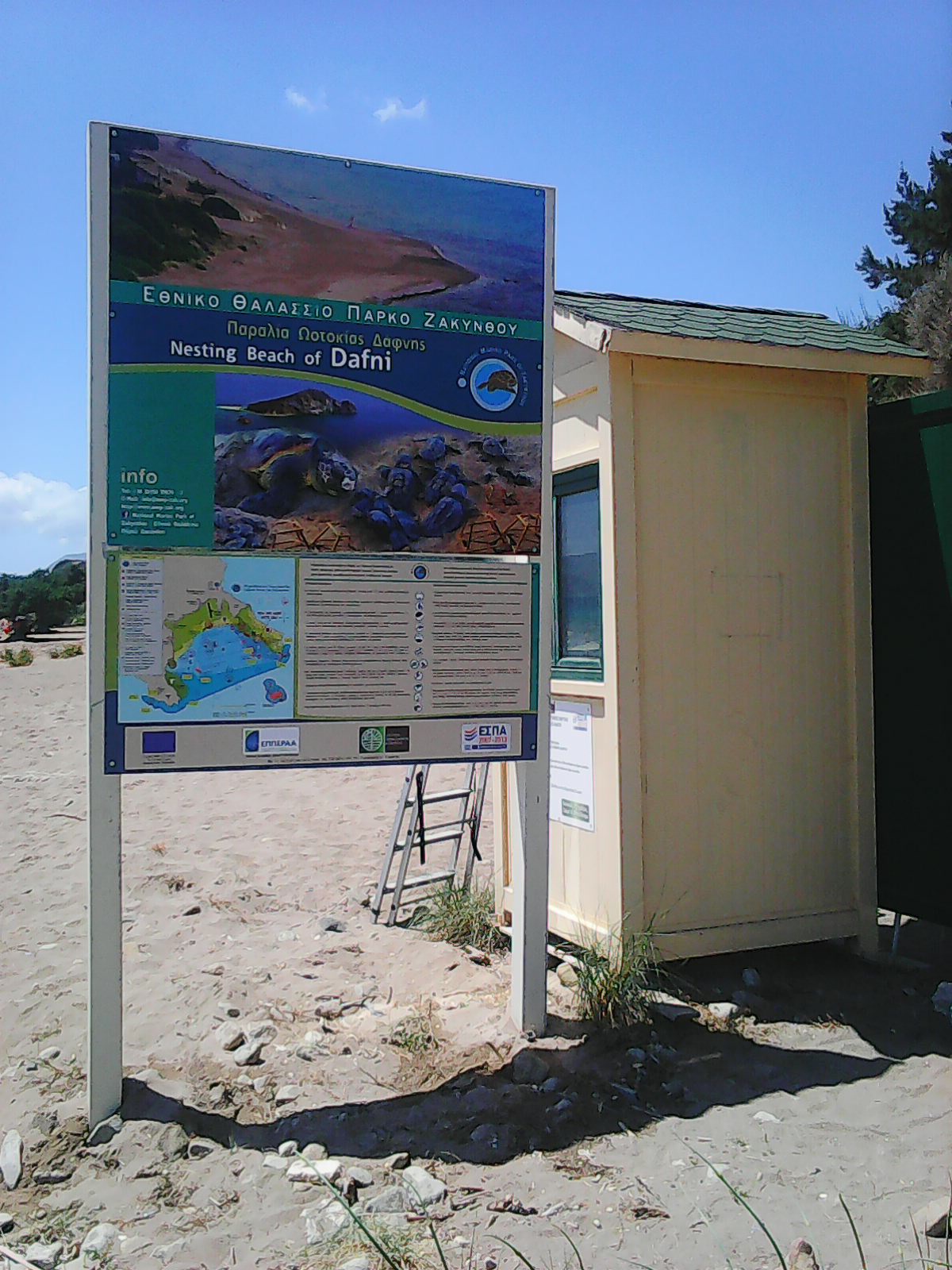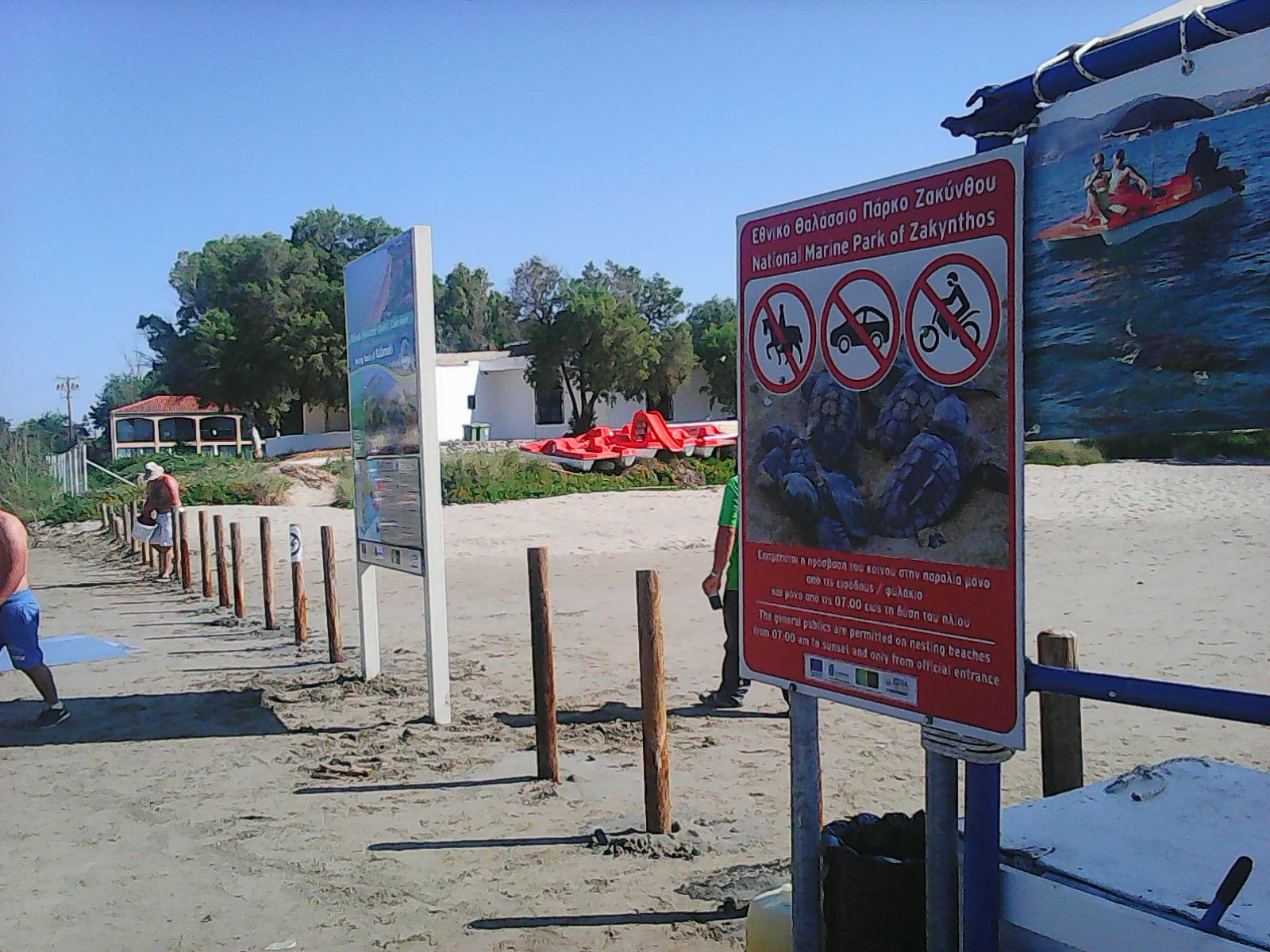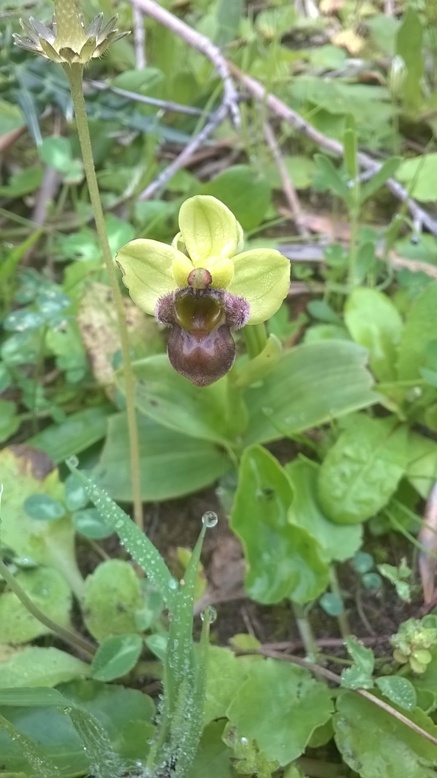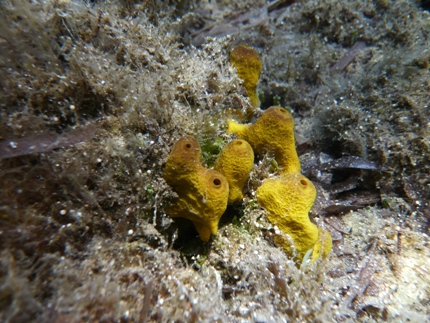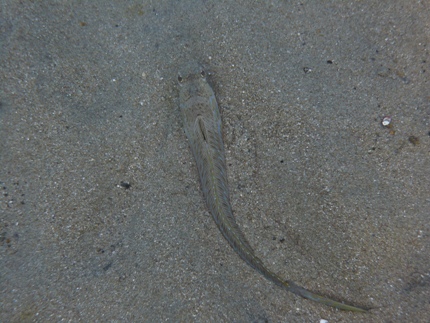Supralittoral zone is situated between the upper limit of the sea tide and the upper limit in which the wave spray can reach. Since it is permanently located above the high water level, organisms thriving therein are subjected to severe and frequent changes of humidity, temperature and salinity.
|
|
It belongs to green algae which are considered to be one of the most primitive forms of floral organism on earth. It is a photosynthetic organism with a characteristic umbrella-shaped cap at the top of its body. It can be found attached on rocks or other hard substrates of the sublitoral zone usually forming dense colonies (Acetabularia phase).
|
|
|
The Mediterranean jellyfish belongs to the class of Scyphozoa. It has a characteristic shape that looks like a fried egg and a lifespan of about 6 months. It may reach the size of 50 cm and feeds on zooplankton. Among the Mediterranean jellyfish’s natural predators the loggerhead sea turtle Caretta caretta is included while the species is known for its population explosions in coastal areas to the end of summer. This jellyfish is not dangerous to humans.
|
|
|
The noble pen shell is an endemic to the Mediterranean bivalve mollusc which can be found in sandy bottoms and Posidonia meadows. It has a lifespan of 20 years and it can be bigger than 1 meter in length. Their populations have been dramatically reduced over the last decades due to overfishing, bottom trawling, anchoring and pollution). Therefore, it is an endangered species under a strict protection status (92/43/EC Directive).
|
|
|
The pillow coral (Class of Anthozoa, Phylum Cnidaria) is known to be the only reef building colonial coral of the Mediterranean Sea. The complex structure of the colony offers new habitats for many small invertebrates and therefore it has been characterized as an ‘Ecosystem Engineer’. It is protected by both National legislation and International conventions (e.g. CITES).
|
|
|
Posidonia oceanica (Neptune grass) grows at depths varying from 5 to 40-50meters, depending on water clarity. It is endemic to the Mediterranean Sea and forms extensive underwater meadows which can be considered as the Mediterranean underwater equivalent of the tropical forests in land. It sustains a large variety of commercially important species. Both the meadows & the dead leaves of P. oceanica that one can find in the shore are protecting the coastline against erosion. It is particularly sensitive to organic pollution and to bottom trawling. Τhe protection and conservation of P. oceanica habitat is a top priority (EU Habitat Directive 92/43) and everyone’s responsibility. |
|
|
Groupers are considered to be among the top predators of the Mediterranean Sea feeding on crabs, octopuses and fishes. Their color varies with age and time. Younger specimens (predominantly females) are usually found near the coast and are green in colour whereas as they grow larger in size they become brown with yellow spots, change sex (transform into males) and move to deeper waters. They can grow up to 1.5 meters in length and more than 30 kg in weight. Τhey are subjected to intense fishing pressure whereas the presence of Marine Protected Areas seems to beneficially impact the recovery of their populations. |
|
Caretta caretta |
The loggerhead sea turtles Caretta caretta migrate across long distances to reach their breeding grounds and lay their eggs, usually, in isolated sandy beaches. This process is repeating seamlessly over millions of years, even before the appearance of man on earth. The protected area of the National Marine Park is one of the most important breeding and nesting areas for the loggerhead in the Mediterranean. It is an endangered species and thus protected by the National and International Law. |
|
|
The common dolphin (cetacean) lives in temperate and tropical waters of the continental shelf (0-250m), mostly feeding on epipelagic and mesopelagic fish shoals and squids. In the Mediterranean, population of the common dolphin has experienced a major decline during the last 30-40 years and, therefore, it is protected by the Convention on Migratory Species of Wild Animals. Several individuals of this species have been recorded in the N.M.P.Z. |
|
|
The Mediterranean Monk Seal (mammal) feeds mainly on Molluscs, Decapod and Fishes. It can reach a length of 3m and a weight of 300kg. It is characterized as a critically endangered species directly threatened with extinction and thus it is protected by both National and International Legislations. In the Eastern Mediterranean, the total population size is calculated to 300-350 individuals (>60% of the global population) while less than 15 individuals inhabit the area of the N.M.P.Z. It should not be harassed in any way by visitors.
|
|
|
The red starfish belongs to the group of Echinoderms. It has a wide bathymetric distribution (1-250m of depth) and is commonly found in rocky or sandy areas, seagrass meadows and reefs. The mouth of the red starfish is located at the lower part of the body and it feeds on other invertebrates. A complex system of channels (ambulacral system) is also found in its body which serves both for moving and breathing.
|
|
|
The Mediterranean fan-worm belongs to the group of the Polychaete Annelids. It is characterised by an elongate tube anda colourful crown of feeding tentacles which can be retracted into the tube when it feels threatened. The tentacles are trapping planktonic organisms and suspended particles of organic matter which are the main food of the fan-worm.
|
mainly through the Suez Canal ("Lessepsian Immigrants").



